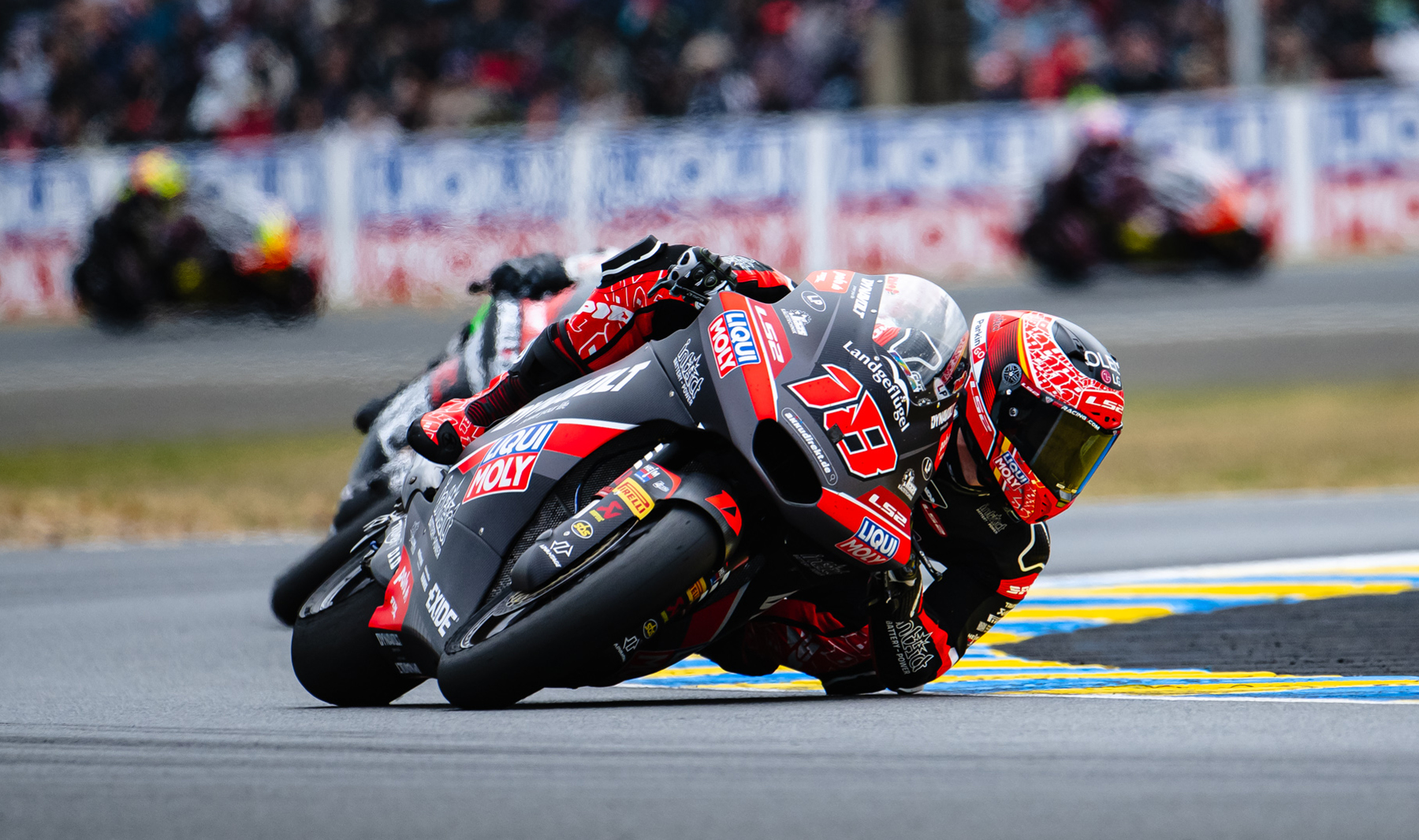
| The two Spanish riders triumphed in Moto2™ and Moto3™ respectively; Baltus and Carpe set the new best race laps of their respective races. |
|||
· Manuel Gonzalez (Kalex) won the 2025 French Grand Prix in the Moto2™ class from pole position, after always being at the head of the group and finishing ahead of Barry Baltus (Kalex) and Aron Canet (Kalex). All riders in the race used supersoft SCX compound tyres at the rear, combined with the soft SC1 front. Baltus also set the new best race lap in 1’34.941 on lap ten, improving the time set in 2024 by Aron Canet (1’35.796) by almost 9 tenths. · The Moto2™ race, ending in 35’05.439, had an extremely high pace, with an improved overall race time of more than 15 seconds, and on average 7 tenths per lap faster than in 2024. · Both races were held on the asphalt still damp due to the rain that fell until the early hours of the morning. The Moto3™ raced with 20°C of asphalt temperature, while the Moto2™ with 21°C and very cloudy skies. Despite rather low track temperatures, basically all riders used the softer rear solutions, which proved to be very versatile. Excellent slick tyres performance with new best race laps even on damp asphalt |

Michael Le Pard (“Mr. Totalmotorcycle”) is the Founder of Total Motorcycle, the world’s largest motorcycle information site, trusted by over 430 million riders since 1999. With over 34 years of experience in motorcycles, gear and rider culture, he has built a global community dedicated to empowering and inspiring motorcyclists.
Total Motorcycle remains his passion project. Combining expert research, hands‑on knowledge and a commitment to helping riders make informed decisions about bikes, gear and safety worldwide.


